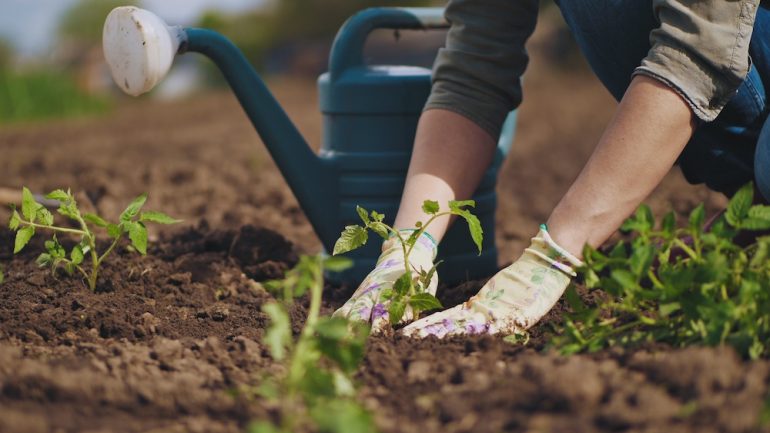A chill is in the air, the leaves are falling, and the scent of pumpkin spice is in the air. It’s time to finish your last vegetable harvest and winterize your garden for the frosty months ahead. Fall maintenance lessens the amount of work you’ll have to do come spring and will make your garden more productive.
Final harvest
Before the first freeze, comb through your garden and harvest the last tomatoes, zucchini and other vegetables. If some aren’t entirely ready to eat, store them in a paper bag on the kitchen counter to finish ripening.
Weed
Winterizing your garden requires removing and tossing weeds and grass that may have infiltrated during the summer. It’s best to trash or burn these invaders rather than add them to compost, where they can end up infesting your garden again next spring.
Clear, compost, and mulch
Cut and clear old plants from the garden rather than letting them stay and rot during the cold winter. If they are healthy, cut them up and put them into your compost, or mulch them into the rows of the garden. Do not compost or mulch any plants that are diseased or moldy.
Add mulch made from fallen leaves to planting beds as you are winterizing your garden. Cutting them up with the mower first will help them break down more easily. Add a layer of bagged mulch for a final insulating layer to retain moisture in the soil.
Leave perennial plants that will return next spring. Research which need pruning, such as asparagus and blackberries, and which should be left for another season, such as blueberries.
One last task for winterizing your garden is to test your soil’s pH and mineral content. If the soil is acidic, add lime to balance it in time for spring planting. You can also add mineral-rich natural fertilizer to enrich the garden soil.
Plant winter crop and spring bulbs
Early fall is the time to plant winter crops such as kale, beets and carrots. Plant garlic and other bulbs for a spring crop. Cover crops when a winter freeze or snow is in the forecast.
Related – Mulch is a Gardener’s Best Friend


